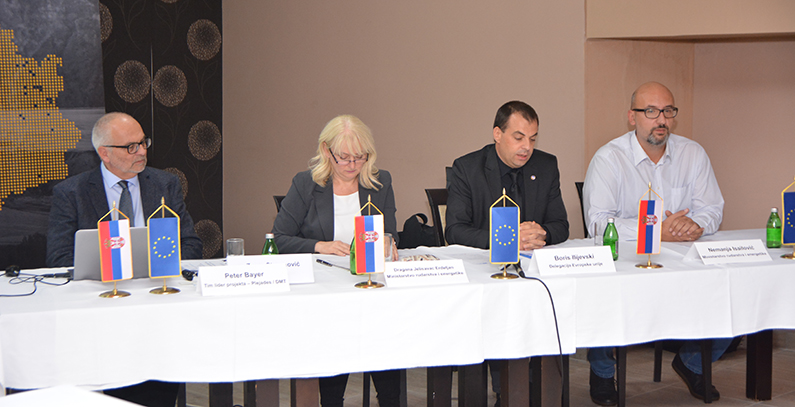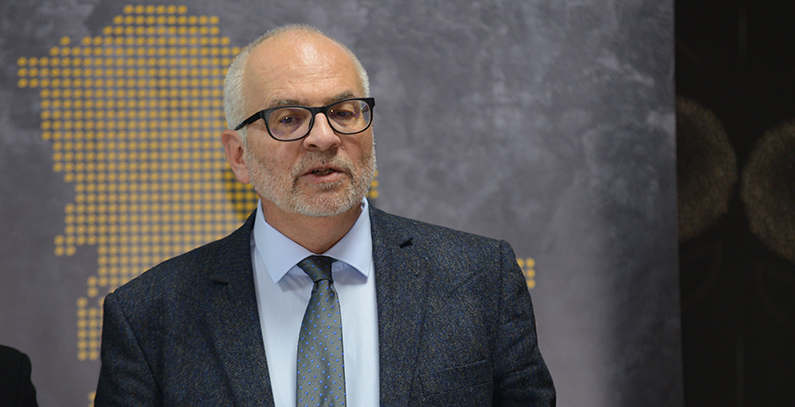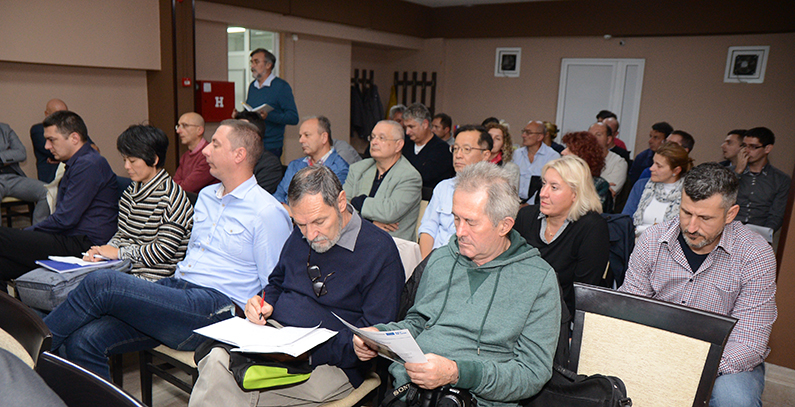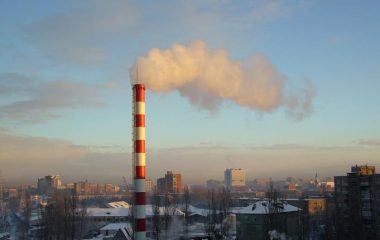
Photo: Peter Bayer, Dragana Jelisavac Erdeljan, Boris Ilijevski, and Nemanja Isailović (BGEN)
After almost three years of the Cadastre of Mining Waste (VIDEO) project implementation and visits to 250 locations, Serbia will get data on abandoned locations of mining waste on February 1, 2020. Data on 41 locations comprising 80% of identified mining waste, which could endanger the environment and human health, will be available on a web application not only to the state institutions but also to the general public, according to participants in a public presentation held in Bor.
The EUR 2.1 million Cadastre of Mining Waste project, which began in 2017 and ends in early 2020, is 90% funded by the European Union and 10% by the Government of the Republic of Serbia. The first presentation of the project was held in Raška, in October 2018.
The cadastre is an important step in establishing responsible and sustainable mining waste management
At a presentation in Bor, representatives of the Ministry of Mining and Energy, the EU Delegation to Serbia and members of the project team presented to companies, organizations, and journalists the methodology of the project, the achieved results and importance for the country’s mining sector, and the environmental impact.
The cadastre, which will be available in the form of a book and a web application, represents an important step in establishing responsible and sustainable mining waste management.
After the consultation between the project team and the Ministry of Mining and Energy, 41 locations were selected to be further investigated (sampling of soil, mining waste, groundwater and surface water, chemical analyses, stability assessment).
Abandoned mining waste sites in most cases adversely affect surface water and groundwater
They are located in 21 municipalities across the country: Aleksinac, Boljevac, Bor, Brus, Crna Trava, Čajetina, Dimitrovgrad, Knjaževac, Kragujevac, Krupanj, Kučevo, Loznica, Ljubovija, Majdanpek, Mali Zvornik, Nova Varoš, Prijepolje, Raška, Surdulica, Voždovac (in Belgrade), and Zaječar.
Peter Bayer, the team leader of the Cadastre of Mining Waste project, reported on the status of the project and said that the field work and analyses have been completed.

“Until the end of the project, scheduled for January 2020, the focus of the project team will be on reporting, whereas we have already delivered 23 site reports, while the work for remaining 19 is in progress. The reports state that abandoned metal mining sites in most cases show an adverse impact on surface water and groundwater,” Bayer said.
Case studies to remediate three sites being drafted
In parallel with the field work and site investigations, the project team was working on the development of the cadastre in the form of a book and a web application, with the latter also presented at the event.

Dragana Jelisavac Erdeljan, head of the Mining Department at the Ministry of Mining and Energy, said that the Republic of Serbia will be equipped with sound documentation so it can react in an appropriate manner in case of remediation, rehabilitation, and re-cultivation of mining waste facilities that are critical for the environment or human health.
Case studies will include remediation options, as well as costs
Boris Ilijevski, Project Manager, Local Infrastructure and Energy, the EU Delegation to Serbia, recalled: “For almost 20 years the European Union and Serbia are working together for more sustainable, secure and environmentally friendly energy supply. With IPA support now and CARDS support before, the EU invested more than EUR 75 million in wastewater treatment plants, emission reduction, ash disposal systems or similar environmental protection measures. Still, there is much more to do in the coming years.”
The outcomes of this project, including case studies based on the best EU practice on waste management and Manuals for Inspectors, will be of great help for the future work on effective and environmentally secure and safe mining waste management.
The Cadastre of Mining Waste project aims to support the Republic of Serbia in further harmonization of regulations with the EU laws in the sector of mining and environmental protection, and in particular by developing and further improving the mining waste management system. The contracting authority for this project is the Ministry of Finance, the Department for Contracting and Financing of EU Funded Programmes (CFCU). The beneficiary of the project is the Ministry of Mining and Energy, and the project is implemented by a consortium of German companies PLEJADES and DMT.









Be the first one to comment on this article.